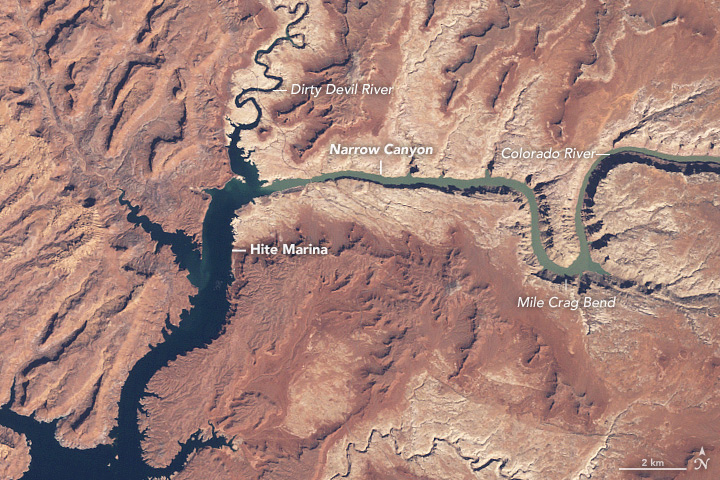The Water Crisis and Lake Powell
September 16, 2022
In the year 1963, the Glen Canyon Dam began construction in Northern Arizona creating what we now know as Lake Powell. With capacity to hold upwards of 26 million acre-feet (MAF) of water, Lake Powell can provide over 1,300 megawatts of power to surrounding states such as Arizona, Nevada, Colorado, New Mexico, Utah and more. When Lake Powell was first built “The Law of the River ” was created, which stated that 8.23 MAF had to be distributed to surrounding states, Lake Mead and other areas in the Lower Basin. (according to Western Resource Advocates) Due to this law, in years when the lake receives below the average influx of water, they are in a so-called water deficit causing water levels to drop. With several ”drought years’ ‘ occurring right after each other, levels have reached all time lows of 28% of max capacity. This has caused marinas to close or be relocated, gas stations to shut down and boat ramps to be inaccessible.
You might be asking yourself “what does this mean to me?” For starters, the most obvious downside of the water crisis of Lake Powell is the inability to provide power to the millions of people and several states that rely on it. With lack of a water source in such a dry, arid desert, surrounding communities and reservations will suffer income, culture and population. Perhaps the most obvious effect of the Lake Powell Water crisis is the understanding that once the water reaches a certain low, it will be uninhabitable to use recreationally.
The Bureau of Reclamation stated that in 2019, when the water levels were roughly 100 feet higher than they are now, the lake brought in $420 million in revenue solely off of tourism. It has since dropped due to the lack of people visiting the lake in belief that it is far too low to be usable. A once great body of water full of potential is now quickly diminishing in hydroelectric power, popularity, and wealth. The question is: Will it ever bounce back?
